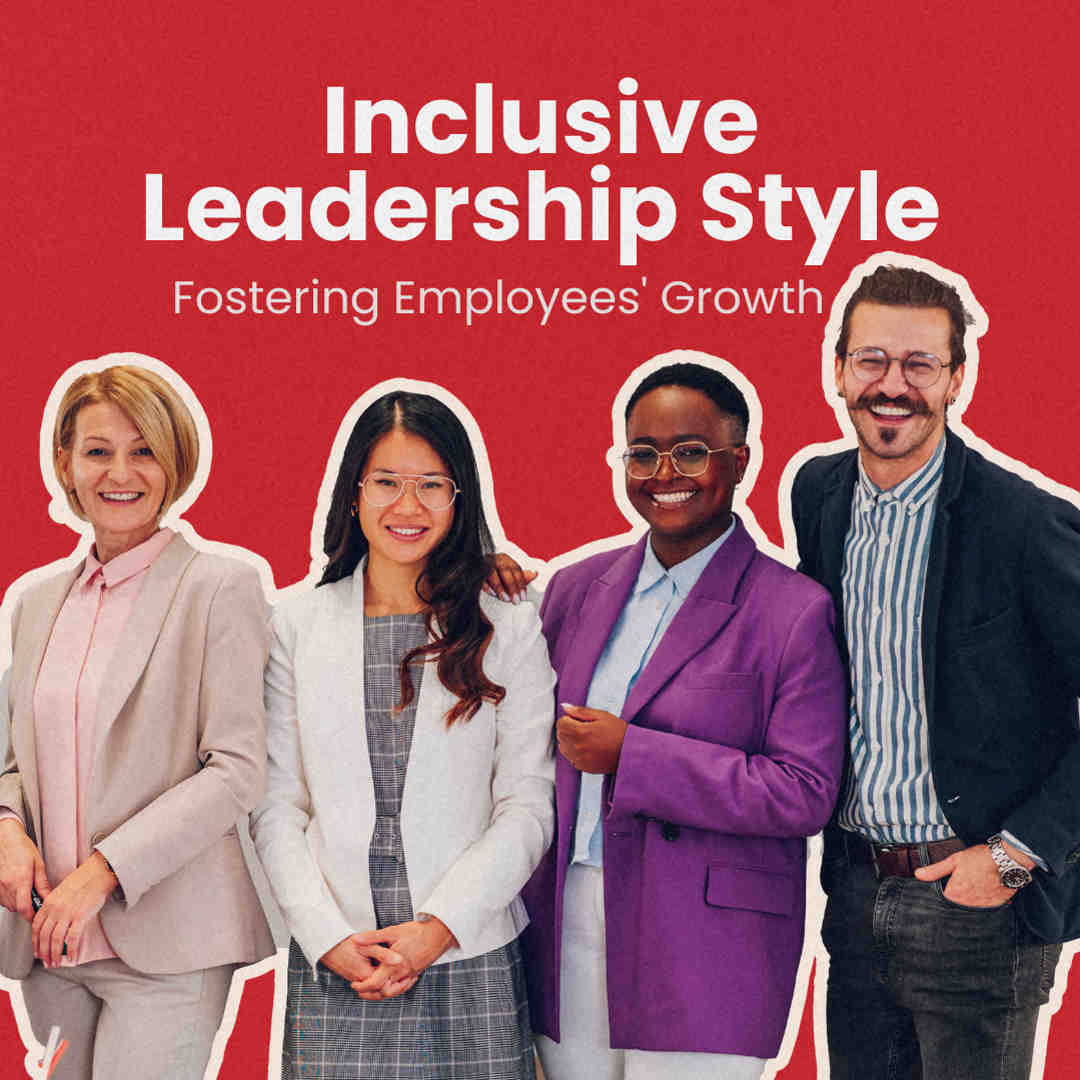Overview:
- Good leadership adapts to the needs of their employees.
- Policies within an organization should be tailored to the multicultural background of the workforce.
- Inclusive leadership also involves creating equal opportunities for employees to grow their careers.
As businesses move towards innovation and growth, thoughtful strategies for a successful workplace are essential to continuously thrive. These strategies are not just about leading the operations and generating profit. When it comes to long-term sustainable growth incorporating inclusive leadership style also helps companies move towards development. This type of leadership ensures organization fosters creativity and growth with every employee regardless of their background.
Redefining Leadership in the Workplace
Leadership is one of the many aspects that make a company stand out. However, as organizations and needs are constantly changing, the leadership style should focus on progress and inclusivity. Without inclusive leadership, it will be hard for the organization to build a workplace that is accommodating for every worker. A progressive workplace emphasizes open communication, positive collaboration, and a flexible culture. It sets the tone for a healthy working environment, employee satisfaction, and a diverse and inclusive workplace. Organizations that fail to adapt to the needs of their employees will likely lose their talents. These individuals will seek opportunities in other organizations that offer support to their growth and well-being. Therefore, good leadership goes beyond hierarchy, it focuses more on empowering and considering the uniqueness of everyone. This approach fosters an engaged and productive workforce, ultimately leading to a more successful organization.

Importance of Inclusive Leadership Style
Recognizing the importance of inclusive leadership is vital for every organization. The way employees are treated reflects in the quality of their work. Therefore, establishing good leadership can bring a lot of opportunities for workers to excel in their chosen fields. Gone are the days when we recognized the employees’ effort with a pizza party or more tasks. Building and connecting to employees through inclusive leadership can cultivate an environment where they thrive to advance their careers. After all, the workforce plays a pivotal role in the organization’s success.
The Key to Inclusive Leadership
The key to an inclusive leadership style is determining first what should be improved and implemented. Identifying weaknesses helps organizations to build awareness in management. Inclusive leadership assessments are also important. When leaders know where to begin and are assessed, they can better guide how to help their teams grow. Here are some benefits of inclusive leadership style to both employees and companies,
Higher Performance and Productivity
When it comes to good leadership, ensuring employee’s growth should be one of the primary goals. This is one way management can communicate that they support their employees to grow in their desired fields. Additionally, a sense of accomplishment in their actions can lead to a happy and productive work culture.
Positive Organizational Structure
Inclusive leadership promotes a culture of respect and understanding. When an employee feels accepted, they will not perceive any barrier hindering their learning. This, in turn, helps them feel more at ease to learn from their leaders, colleagues, and experiences.

Adaptability and Resilience
When a leader builds the confidence and knowledge of their team, they empower them to take on complex challenges. This enables them to adapt and be resilient to changes in the organization.
Better Talent Retention and Attraction
When the workplace is inclusive it attracts talents from different backgrounds and reduces turnover. This can also help in retaining top talent, as diverse employees bring broad ideas and knowledge.
Inclusivity Builds Exceptional Leadership
Developing good leadership within the organization has a lasting impact on employees. The high standards set by exemplary leaders serve as a blueprint for other employees to excel and build their leadership skills.
Strategies for Developing Inclusive Leadership
There are several ways to promote inclusivity in the workplace and develop inclusive leadership inside the organization. Sometimes, it’s going to be a hands-on discovery of what can be the best practice to implement. Here are some lists that the company can get started:
Training and Development Program
Organizations can launch a program for leadership skills and implement training for diversity and inclusion. This can further empower the employees and can go a long way in ensuring employees can maximize their abilities.
Mentorship Program
Providing employees with access to mentorship will further enhance the relationship between the leadership and subordinates. This professional relationship will also enable management to better understand their teams, facilitating a more inclusive approach.

Inclusive Policies and Practices
When an organization prioritizes and understands their employees’ needs, this can strengthen the policies they can implement. This approach will let a company develop a plan that is tailored to the unique needs of their diverse workforce.
Conclusion:
To summarize, there’s no perfect formula to attain inclusivity in the workplace. Instead, leaders should always remember to embrace flexibility and the diverse cultures of their employees. Adopting an inclusive leadership style opens doors for growth and opportunity.
FAQs:
What are some challenges in implementing inclusive leadership?
The challenge lies in ensuring that the company is able to identify the areas that need improvements while taking in consideration the needs of all employees.
What makes an inclusive leader?
Inclusive leadership means making sure that everyone on the team has an equal opportunity for growth. Leaders should also ensure that their team has a safe space to express their desires, capabilities, and skills.
How does an inclusive leadership style contribute to fostering employee growth and career advancement?
Inclusiveness within the organization fosters a sense of belonging and encourages positive collaboration. This helps employees feel empowered to learn and develop new skills, ultimately motivating them to advance their careers.


